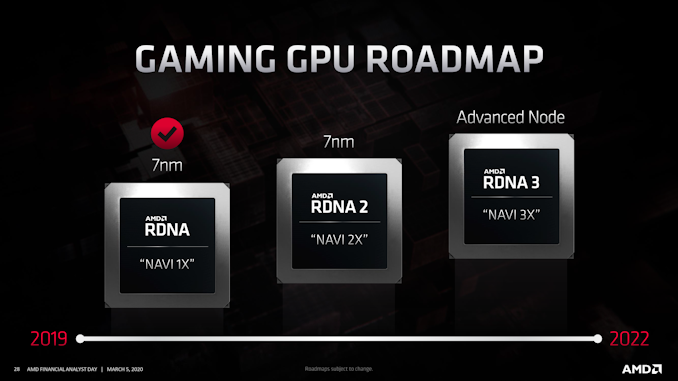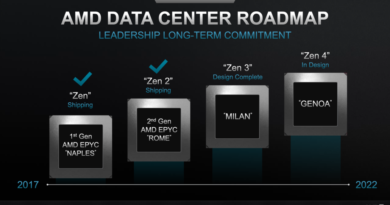AMDs Radeon Future Looks Bleak After RDNA 5
Those were the days when GPU duopoly was more interesting and exciting. where Geforce would outshine Radeon when launched and then Radeon would steal the thunder with its own launch. Nvidia would have some tricks up its sleeve for performance be it its tesselation days and Radeon would have some other tricks like async shaders.

Radeon GPUs also boasted features first frequently and Nvidia would catch up and the other way around was true too. Although Nvidia remained the market leader for most of the time, ATI / AMD remained almost there. But things have changed, for the worse, for Radeon GPUs and it must really suck for AMD engineers to always launch products which are behind the features, remains uncompetitive, hard to sell and always in catch-up mode to the competitors and still not able to outshine feature-wise.
At the time when Radeon was handled by ATI, the only GPU vendor to rival Nvidia to keep performance and price war going, AMD bought ATI for hefty money which Nvidia celebrated as ATI throwing in the towel. However, at that time, AMDs CPU department took a hit with poor performance and lacklustre sales countered by brilliant Radeon performance. Things changed when AMD decided to focus on its CPU division and their GPU division took a backseat. the result was the birth of Zen line of CPUs, which catapulted AMD back to an enthusiastic market of CPU outshining Intel. The problem with this was that AMD had to ensure that the CPU momentum would remain and they focused exclusively on CPU side. Radeon kept on taking the backseat. Their main GPU focus was on consoles which ensured that they would at least have sales numbers to boast about.

However, This was also the time when Nvidia doubled down on their GPU and started churning out a monster of GPUs with some new features. Nvidia being not in CPU line wanted to get the data center market with their GPUs and ensured that their GPGPU effort on CUDA software was top-notch. Also, Nvidia was a very time advocate of artificial intelligence on GPU and that bet paid, and boy has that paid. Nvidia got tons of revenue, and tons of money because of the AI craze and now is the biggest market cap company compared to Intel and AMD.
Nvidia also never forgot their bread and butter i.e. Gaming GPUs and have churned out features left and right with the launch of the RTX series of GPU with ray tracing. It’s something which AMD took lightly and still doesn’t have the muscle to match Nvidia on the raytracing front. Nvidia also launched DLSS, their AI powered upscaler which AMD still doesn’t have a proper reply as AMD believes in a holistic open source approach and wide market support. Same with Frame generation where AMD has just caught up but it became too little too late situation.
AMD launched their RDNA as their Zen moment for Radeon GPUs, though they forgo the enthusiastic market, AMD at its segment matched Nvidias performance in raster graphics. While trying to maintain the momentum, RDNA 2 got Ray tracing muscle but fell really flat on the face as AMD did not implement a complete pipeline of raytracing and accelerated only a partial part. AMD has the rasterizing performance but this new fangled Ray tracing was too much and AMD still believed the feature to be very niche to make a buyer decision. and they were wrong. RDNA 3 also hoped to be a powerful GPU and AMD even said that in their slides but RDNA 3 was a miserable launch and too darn expensive to compete with Nvidia either on performance front or price front. This also highlighted how AMD engineers whenever they launch a product keep on playing feature catch up with Nvidia, do a pretty poor job at it and still lose market share.
Now comes the present situation where RDNA 4 is getting ready and AMD has already thrown in the towel for an enthusiastic market and will launch GPUs just to cater medium to low-end segment and no one believes that performance would be any better than the previous generation. AMD knows and is soldering cheap memory on it, hoping they can win with a price war. However, RDNA 4 has not launched yet and this is still speculation but it looks bleak.
Now comes RDNA 5, this potentially could be the foundation for next-gen Consoles, AMD also now has much resources and time in hand to actually beef up the GPU and architecture to match Nvidia on its feature front. AMD also has now time to fine-tune its AI capabilities and catch up with its own DLSS alternative, Framegen Alternative and hopefully ray reconstruction technique on board.
However, if this also fails and with everyone trying to aim at the AI market segment, I doubt AMD would like to cater to gamers in a grand fashion. Their effort will go to GPUs for large language models and to keep GPUs in their APU, Just like Intel has done in past and is relegating back to the same with their discrete GPU not doing much.
This is actually a very sad future where instead of duopoly or tripoly, we may just stuck with one vendor who can charge whatever comes to mind (Nvidia is already charging a bomb). Common people might not be able to upgrade their GPUs so frequently and the only way to play cheap games would be consoles. end of the PC master race.
- Titan Fall(ter): Intel’s Stumble an Analysis - August 5, 2024
- AMDs Radeon Future Looks Bleak After RDNA 5 - May 1, 2024
- Kinect 2- Right time to use A.I. in Nextgen Consoles? - April 30, 2024





